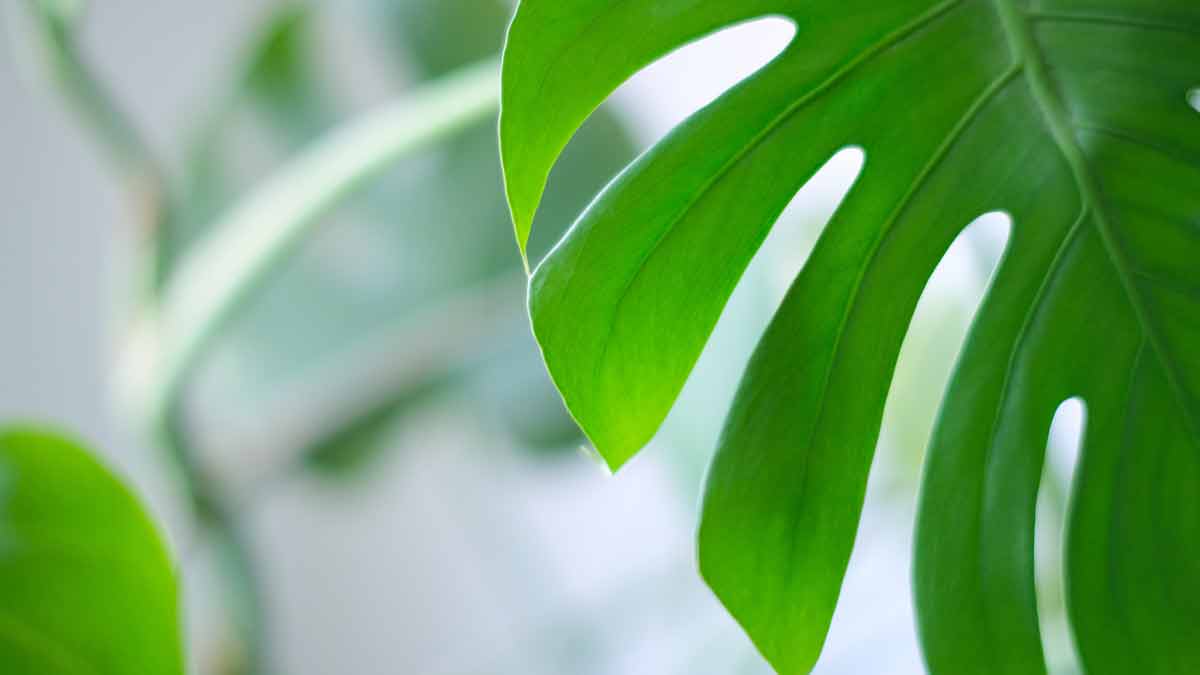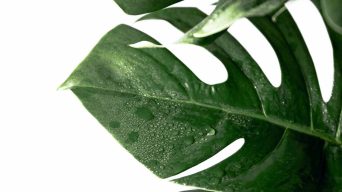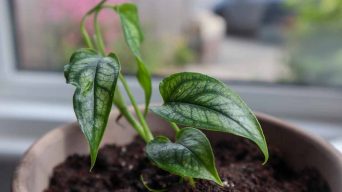Monstera plants have holes in their leaves called fenestrations that allow sunlight to reach lower leaves in thick rainforests. The holes also help the plant capture light more efficiently in unpredictable conditions. Providing more support and light can encourage the formation of more fenestrations.
Monstera Deliciosa, also known as the Swiss cheese plant, is a popular houseplant known for its unique leaf structure.
One of the most distinctive features of this plant is the holes or splits that appear in its leaves.
These holes have puzzled plant enthusiasts for years, with many wondering why this plant has evolved to have such an unusual leaf structure.
There are several theories as to why Monstera leaves have holes.
One theory is that the holes allow the plant to capture more sunlight by growing taller overall.
Another theory is that the holes help the plant to absorb more water and withstand harsh winds.
Some experts suggest that the holes also help regulate the plant’s temperature by allowing air to circulate freely through the leaves.
Despite the many theories, the exact reason why Monstera leaves have holes remains a mystery.
However, understanding the potential benefits of this unique leaf structure can help plant enthusiasts care for their Monstera plants more effectively.
This article will explore some of the most common theories about why Monstera leaves have holes and what they mean for the care of this popular houseplant.
Anatomy of Monstera Leaves
Monstera Deliciosa, also known as the Swiss Cheese Plant, is a tropical plant native to Central and South America.
Its leaves are one of its most distinct features, known for their unique shape and holes.
The leaves are large, heart-shaped, and can grow up to three feet long.
The leaves of the Monstera plant are made up of several parts.
- The blade is the flat, green part of the leaf responsible for photosynthesis.
- The petiole is the stalk that attaches the blade to the stem.
- The midrib is the central vein that runs down the blade’s center, and the lateral veins branch out from the midrib to the edges of the blade.
One of the most notable features of Monstera leaves is the holes, or fenestrations, that appear in mature leaves.
These holes are absent in young leaves and develop as the plant grows.
The holes can vary in size and shape; some leaves may have only a few, while others have many.
There are several theories as to why Monstera leaves have holes.
One theory is that the holes allow the plant to withstand strong winds by reducing wind resistance.
Another theory is that Monstera leaves split to allow the light to penetrate deeper into the plant, reaching lower leaves and aiding in photosynthesis.
Regardless of the reason, the holes give the Monstera plant its unique and striking appearance.
Evolutionary Purpose of Holes in Monstera Leaves
Monstera leaves have holes for a reason, not just for aesthetic purposes.
The holes serve an evolutionary purpose that has allowed the plant species to thrive in its natural habitat.
Here are some of the reasons why Monstera leaves have holes:
- Temperature regulation: A Monstera plant can regulate its temperature by growing splits and holes in its leaves. The holes allow air to circulate around the leaves, which can help to cool them down on hot days.
- Wind resistance: Monstera leaves are large and can easily be damaged by strong winds. The holes in the leaves allow wind to pass through them easily, reducing the stress on the leaves and preventing them from snapping or breaking.
- Improved growth: The holes in Monstera leaves are an adaptation to improve the plant’s living conditions. The holes allow more sunlight to reach the lower parts of the plant, which can stimulate growth and improve the plant’s overall health.
The Monstera fenestrated leaf result from the plant’s evolution and environmental adaptation.
By allowing for better temperature regulation, wind resistance, and improved growth, the holes have helped Monstera plants thrive in their natural habitats.
Environmental Factors That Affect Monstera Fenestration
Monstera Deliciosa plants are native to tropical regions and require specific environmental conditions to thrive.
Here are some of the environmental factors that can affect the development of holes in their leaves:
- Light: Monstera Deliciosa plants need bright, indirect light to grow and develop holes in their leaves. If the plant is not getting enough light, the leaves may not split, or the holes may be smaller than usual.
- Humidity: These plants prefer high humidity levels, around 60-80%. If the air is too dry, the leaves may not develop as many holes or become crispy and brown.
- Temperature: Monstera Deliciosa plants thrive in warm temperatures, between 65-85°F. If the temperature is too low, the plant may not grow as quickly, and the leaves may not develop as many holes.
- Water: These plants require regular watering to maintain healthy growth. If the soil is too dry, the leaves may become brown and crispy, and the holes may not develop as well.
It is important to note that these environmental factors can all interact with each other.
For example, the soil may dry out more quickly if the humidity is too low, affecting the Monstera’s growth and development.
Similarly, if the temperature is too low, the plant may not be able to absorb water as efficiently, which can also affect its growth.
Overall, it is crucial to provide Monstera Deliciosa plants with the right environmental conditions to ensure healthy growth and development of their iconic holes.
Paying attention to factors like light, humidity, temperature, and water can help your plant thrive and develop its unique, beautiful leaves.
Cultural Significance of Monstera Plants
Monstera plants hold cultural significance in various parts of the world.
In Eastern cultures, Monstera plants symbolize longevity, respect toward people and are a sign of honoring one’s elders. This makes them a perfect gift for your elders or celebrating birthdays.
In addition to their symbolism, Monstera plants have become popular in modern interior design. Their unique leaves with holes and splits add a tropical and exotic touch to any room.
They are often featured in home decor magazines and on social media platforms like Instagram and Pinterest.
Furthermore, Monstera plants have become a popular tattoo design. Their unique and recognizable leaves make for a beautiful and meaningful tattoo.
Many people get Monstera tattoos as a symbol of growth, adaptability, and resilience.
Final Thoughts
Monstera plants are known for their unique and exotic appearance and large, perforated leaves.
The holes, or leaf fenestration, on Monstera leaves are not just for show; they serve an essential function in the plant’s survival.
Through the process of photosynthesis, plants produce energy from sunlight, carbon dioxide, and water.
However, sunlight is often limited in the dense rainforest environment where Monstera plants grow, and water can be scarce.
The holes in Monstera leaves allow the plant to capture more sunlight and rainwater, increasing its efficiency in producing energy.
Additionally, studies have shown that the fenestrations on Monstera leaves help the plant to regulate its temperature and reduce the risk of overheating. This adaptation allows the plant to thrive in its natural habitat, even in the hottest and most humid conditions.
While the exact reason for the evolution of Monstera fenestration is not fully understood, it is clear that they serve a vital purpose in the plant’s survival.
As we continue to learn more about the natural world, we can appreciate the beauty and complexity of even the smallest adaptations in the plant kingdom.







